Most people would not consider Notre Dame to be a place to visit but it really is. We knew about the beautiful old church and had researched a few other historical landmarks such as the old train station and the tobacco barns. What was a welcoming surprise though, was the friendliness of the people. Do stop over and visit this lovely town if you are in the area, particularly on a Saturday morning so you can experience the market and it’s amazing foods.
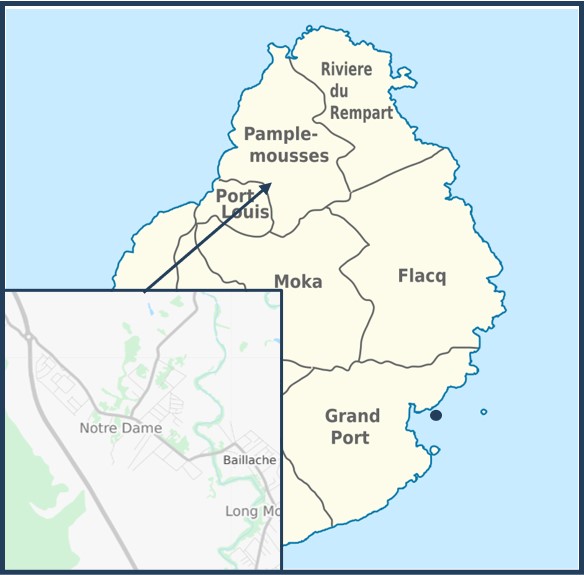
Notre Dame is a small village of about 4000 people located just over the mountain range from Port Louis. It is part of the Pamplemousses district, since 1773, before that it was in the small district of Long Mountain.
The village of Notre Dame owes it’s name to the church established there in 1847, Notre Dame de la Délivrande (Our Lady of Deliverance).
The beautiful tall hexagonal bell tower that you see today was built in 1868 onto the original church from 1855.
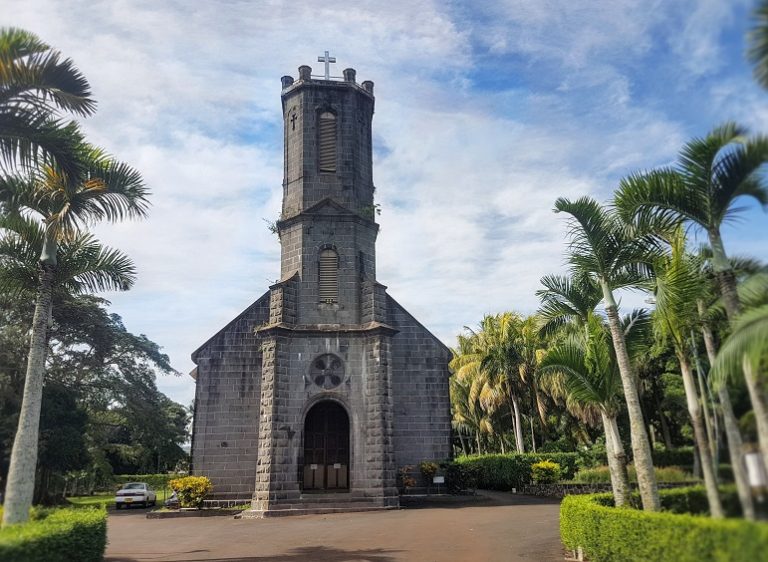
Father Laval spent much of his time in Notre Dame and assisted with it’s construction. The original church was built in 1847 by the people of the village, carrying stones and trees by hand or with carts. This was unfortunately destroyed in 1848 by a devastating cyclone. The people rallied around and built a new one in a matter of months that could house 1000 people. Unfortunately this too was damaged by another cyclone in 1855. The church that was rebuilt however is the one that remains today, excluding the bell tower.
This was the first church under the patronage of Notre Dame de la Délivrande, others in Normandy had long attracted pilgrimages. The same happened here and pilgrims from all over the island, particularly expectant mothers, came to pray at the church.
Father Laval saw this and placed a concrete cross front of the church. Onto this he fixed an iron crucifix which had been brought to Mauritius from France after the French Revolution.
The cross that Father Laval brought with him from France and carried all around Mauritius was placed at the church after his death.

In Notre Dame you will find a number of street vendors selling chicken briyani and it does look good. There is a small snack shop near the market that sells fried treats such as samoosas, fried bread (yes it is a thing) and these incredible onion and coriander bites. Really soft and light and full of flavour and they are Rs10 for 3.
There is a wide variety of fresh vegetables and fruits for sale and even a very skilled man selling fresh fish which he trims and scales with ease for you. For the first time, we saw a large white carrot looking vegetable which turned out to be daikon radish. You can buy fresh chicken which the butcher will also cut up for you as you would like it. As I said in the beginning, well worth a stop.
Notre Dame was one of the first areas in Mauritius to attract large sugar estates. When you visit the area, you can see why. The many rivers and fertile flat lands just near the mountains are perfect for agriculture.
I suppose it doesn’t hurt that your manor house would have a fantastic mountain view.
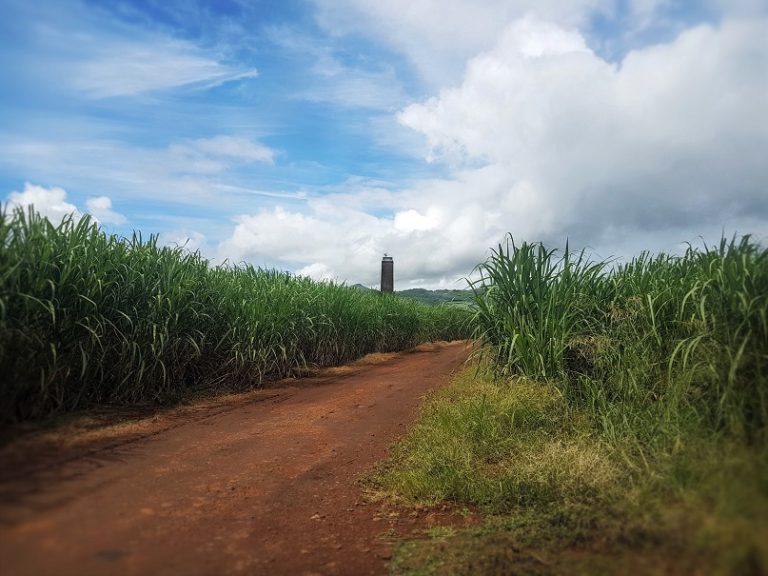
Francois de Chazal set up Belle Montagne in 1763 in the area just across the river from where the tower of Elmina, which can still be seen today, stands. On the hand drawn maps from 1710 – 1790, Chazal is written.
I did many a search and read through numerous ramblings from the 1800’s to find some descriptive mention of the sugar mills but could not find any. However, I did go down an interesting rabbit hole which I would like to relay. Elmina is a city in Coastal Plain region of Ghana. Its name comes from the Portuguese word for “Mine”. The gold found in these mines are also the origin of the name “Gold Coast“, which was the name of what is now Ghana, when it was a British Colony. The Portuguese built Elmina castle here as a trading post in 1482. It was a key building and stopover for the slave trade and is now a UNESCO Heritage Site. Definitely somewhere that we need to visit, but not helping with research on the Elmina sugar estate here in Mauritius.
Unless, perhaps it is the reference to gold? If Francois de Chazal was an alchemist, maybe he buried all the extra gold he created around his sugar mill? Read more about this intriguing tale here.
The other sugar mills in the area were Grande Garde (L’Amitie), which actually annexed Elmina in 1877 and Windsor. Interestingly, as he will pop up again in Mauritius blogs, Major Atchia and his brother Hossen buy L’Amitie in 1916. The Atchia brothers are renowned for building the first hydroelectric plant in Reduit way back in 1901! That is for another story though.
If you would like to read about the remaining sugar mill chimneys and structures in Mauritius, check out this comprehensive page.
https://letsdiscovermauritius.com/blog/sugar-mills-chimneys-in-mauritius.html
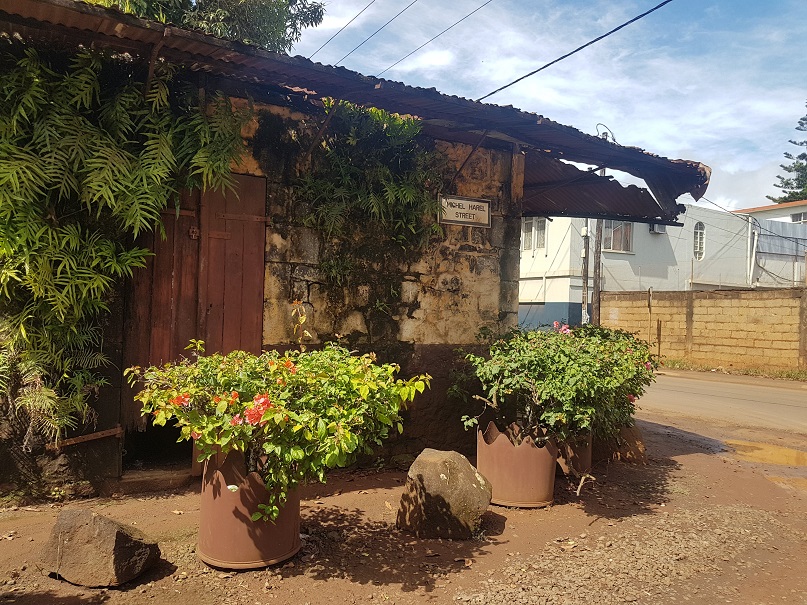
The train line was very short lived, from 1904 to 1928 but there was a station in Notre Dame. This exquisite old building still stands one the main road, be sure to stop and admire it if you are coming to this area.
In 1903 Surra disease had spread through Mauritius, killing the draught animals. This left the people of Long Mountain and Notre Dame without a way to travel from their villages. Although the train was here for a brief period, it bridged the gap for the communities and made it possible to get around.
I was not expecting to find these here in such a wet climate but here they are. Tobacco was a valuable crop but very difficult to cure and dry in the climate. The Dutch introduced tobacco to Mauritius in 1639 but it’s cultivation basically stopped when they left. It was only really reintroduced in the mid 19th century with the arrival of the immigrants from India.
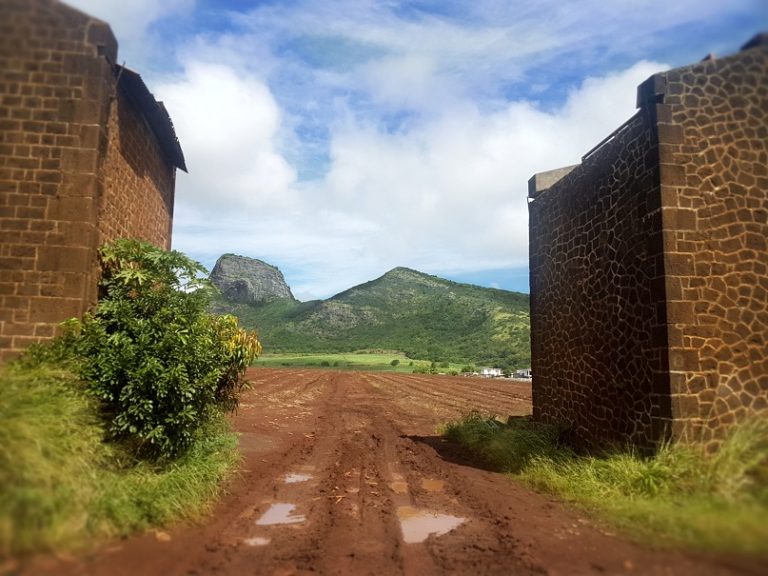
I am not going to go into too much detail of the history and curing technologies that evolved with the tobacco industry. I will save that for another blog as I do believe there are some old factories still in existence in Mauritius.
These old tobacco barns are really something to see, framing the views of the mountain range. Hopefully they will continue being preserved and possibly even converted into something amazing. We made a video on Notre Dame where you can see these barns and the other old buildings in more detail.
If you are looking for a peaceful getaway to experience nature and remarkable mountain views, consider a visit to the Notre Dame and Long Mountain areas. I am sure the village will hold a few surprises for you to discover as well.
If you have enjoyed reading this, please consider buying us a coffee to encourage further visits to out of the way places.
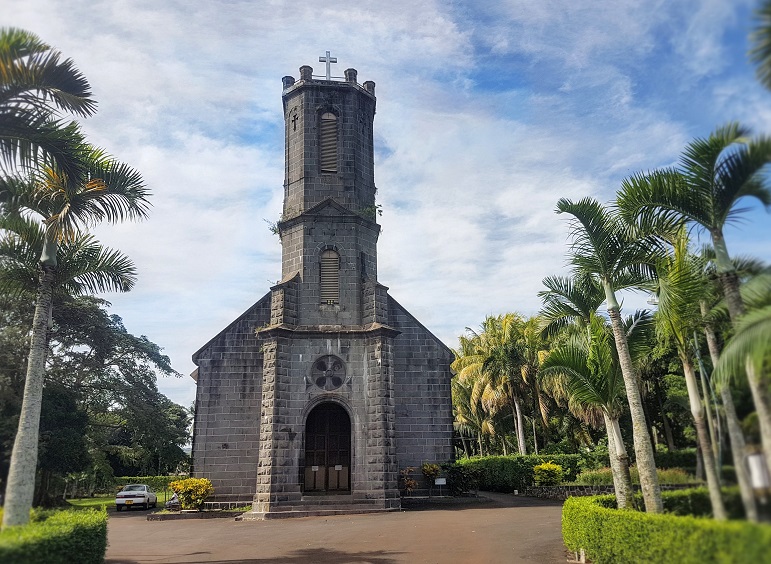
Greetings! Very useful advice in this particular post!
It is the little changes that will make the greatest changes.
Thanks a lot for sharing!
Superb reading notre dame bears a special place in my heart i was born and grew up there.The friendly people,hard working,simple village life.Long live my village .
We really loved Notre Dame, beautiful place with friendly people.
This place is where my mum was born.I have lots of relatives there from chora Bhaie to barka Bhaie. From the video clips I do recognise the church which was on the other side of the main road. My mum maidens name Mahaboub